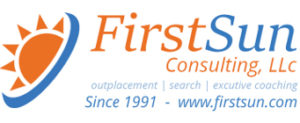#YourCareer : Quit Your Job? Change Careers? This New Book Can Help You Make Better Decisions. GReat REad!
Laurence Alison is a professor of psychology at the University of Liverpool and the Director of Ground Truth. Dr. Neil Shortland is a world expert on military decision making, who has worked with The Ministry of Defense (MoD), the United States Department for Defense and National Institute for Justice. Their new book, Decision Time: How to Make the Choices Your Life Depends On, includes some high-stakes examples from military campaigns, terrorist situations and natural disasters, but offers valuable information for everyday life decisions, including career moves.
If you’re debating whether to take a new job, weighing a change of career or thinking of starting a new business, Decision Time offers specific advice and general frameworks to break down complex, sometimes amorphous decisions into actionable steps. Here are five favorite takeaways from the book that are particularly relevant to career decisions:
“When faced with what seems like a decision, your initial task is to work out whether there is, in fact, a decision to be made at all….We often find ourselves falling into this pattern of agonizing of decisions that are not available to us, or that we do not have the power to make” – Laurence Alison and Dr. Neil Shortland in Decision Time: How to Make the Choices Your Life Depends On
Like this Article? Share It! You now can easily enjoy/follow/share Today our Award-Winning Articles/Blogs with Now Over 2.5 Million Growing Participates Worldwide in our various Social Media formats below:
LinkedIn: https://www.linkedin.com/in/chris-g-laughter-b46389198/
Twitter: Follow us @ firstsunllc
Best Daily Choice: Follow the Best of FSC Career Articles/Blogs @
https://twitter.com/search?q=bestoffscblog&src=typeahead_click
Question: Want the ‘the best/current articles/blogs on the web’ on Job Search, Resume, Advancing/Changing your Career, or simply Managing People?
Answer: Simply go to our FSC Career Blog below & Type(#Jobsearch, #Resume, or #Networking) in Blog Search: https://www.firstsun.com/fsc-career-blog/
What Skill Sets Do You have to be ‘Sharpened’ ?
Did you know? First Sun Consulting, LLc (FSC) is celebrating over 30 years in the delivery of corporate & individual outplacement services & programs to over 1200 of our corporate clients in the U.S., Canada, UK, & Mexico!
We here at FSC want to thank each of corporate partners in the opportunity in serving & moving each of their transitioning employee(s) rapidly toward employment !
Article continued …
Too many unhappy people stay at their jobs because they think the first decision is “Should I take a new job?” or “Should I start that new business?” They fritter away their scarce free time and energy belaboring over how difficult it would be to make such a transition or how much salary they might have to give up or how hard it would be to find something new, rather than actually starting the process. As Alison and Shortland point out, you need to make sure there is a decision to make, and in the very beginning of career exploration, you don’t have an offer to respond to or a new business to launch. Your immediate decision is to get started with something. Quitting your job or putting up funds for a new venture comes much further down the road, but it paralyzes people unnecessarily.
“Five frogs are sitting on a log. Four decide to jump off. How many are left? Answer: Five. Why? Because there’s a world of difference between ‘deciding’ and ‘doing’.” – Laurence Alison and Dr. Neil Shortland in Decision Time: How to Make the Choices Your Life Depends On
With complex decisions like a next career move, there are lots of smaller decisions that need to be made first and acted upon before getting to the dramatic crossroads of stopping whatever you’re doing to take up something new. In the case of a new job, this includes figuring out what you might want to do next, researching other companies, looking at job postings, updating your marketing material, refining your interview technique and more. This is where deciding meets doing and what drives a job search forward.
“Many people assume that the biggest ‘mistake’ you can make when making a decision is to choose the ‘wrong’ thing. But our experience and research has led us to believe something very different: the biggest ‘mistake’ you can make is to do nothing.” – Laurence Alison and Dr. Neil Shortland in Decision Time: How to Make the Choices Your Life Depends On
When changing careers – to a new industry, new role, or from employee to entrepreneur (or vice versa) – the potential regret of making a wrong pivot keeps some people stuck where they are. But this just trades the potential of being unhappy for the certainty of staying unhappy! If quitting your job turns out to be a mistake, you can go back – there have been enough people who have done that that the Great Resignation has been met by the Great Return. If you pivot to a new industry or role and prefer your original one, you can rebrand the pivot into a learning experience. If you launch a business and it fails, as long as you avoid financial ruin, you can make back the costs. Jeff Bezos has a useful decision framework about making decisions quickly when they can be reverted and taking extra time and care only when they cannot. With careers, few decisions cannot be unwound.
“Decisions are just as much about when you do something as they are about what you actually do.” – Laurence Alison and Dr. Neil Shortland in Decision Time: How to Make the Choices Your Life Depends On
Alison and Shortland emphasize the importance of timing in decision-making – the “when” and not just the “what”. Timing is critical in many career decisions. When you lobby for a promotion, the right time is when you have had a big win. It is also before decisions have been finalized so you can make your case while budget and titles can still be allocated. When you make a big transition (e.g., to a new job, to a different career, to launch a business), the better time is when there aren’t other momentous events happening in the household. If your significant other just started a big new job, they won’t be able to provide extra support during your transition. If your child is just entering school or you’re moving residences or a family member needs medical care, you will be pulled in too many directions.
“Ignore the choice and you’re giving up the chance to influence future events – and that’s one of the greatest chances life offers any of us, and never one to turn down.” – Laurence Alison and Dr. Neil Shortland in Decision Time: How to Make the Choices Your Life Depends On
While Alison and Shortland remind the reader that sometimes there isn’t a decision to be made or, due to timing, it’s best to wait and take more time, they also talk about when to be decisive and make that choice. The book outlines different types of decision-makers so that readers can see what their tendencies are, the advantages these tendencies might convey and the disadvantages to watch out for. The book also offers different models for making decisions so that readers have frameworks to follow when a choice can be made. Because career moves have so many moving parts, the insights and information in Decision Time create a scaffold to help readers think through the different moving parts more carefully and objectively.
Make more informed choices. Neither rush, nor delay, but show impeccable timing. Recognize that no choice is actually a choice and likely a mistake. Take action once a decision is made. Only decide when you actually have something to decide. These are all excellent tips for making smart career moves and are covered exhaustively and engagingly in this highly recommended book.
Forbes.com | August 29, 2022 | Caroline Ceniza-Levine






